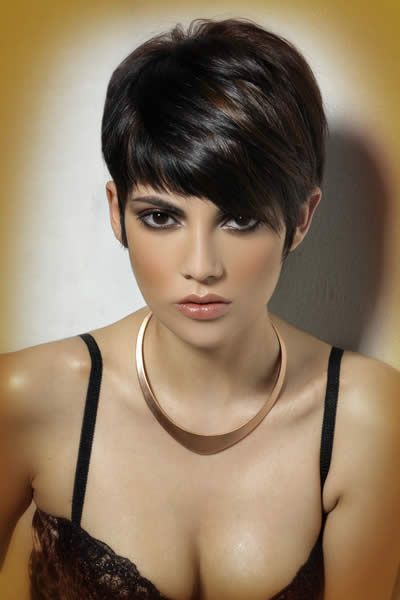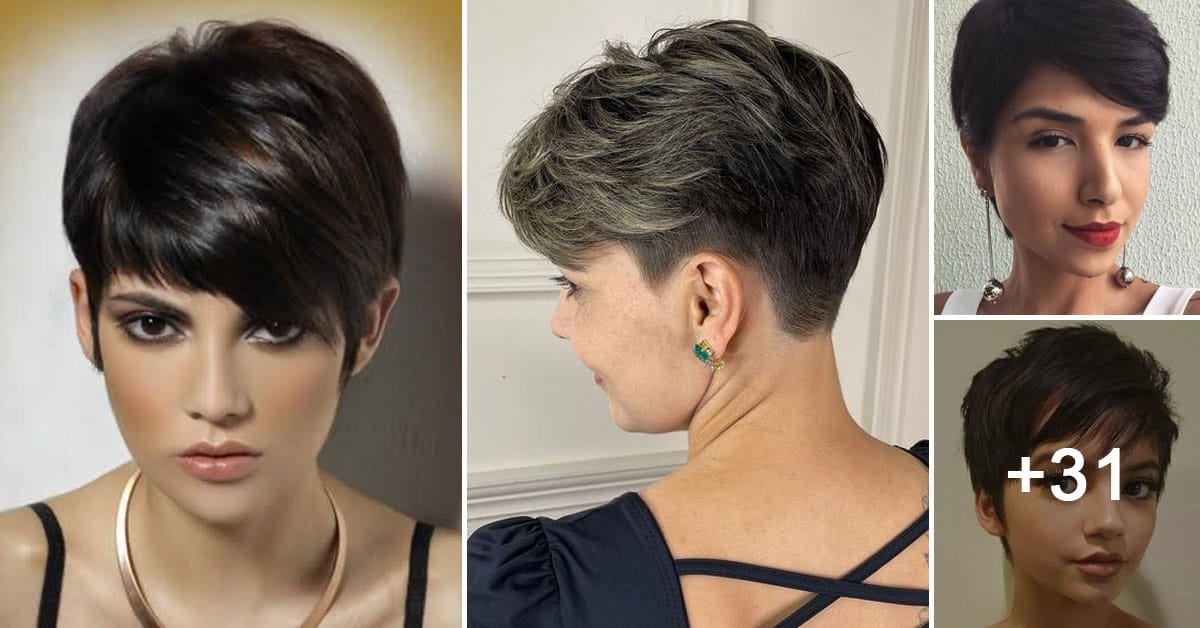In the dynamic world of women’s fashion, very short haircuts emerge as a bold statement of style and self-assurance. These hairstyles, ranging from the daring pixie to the sleek buzz cut, encapsulate a sense of freedom and individuality, challenging traditional norms while offering a blend of sophistication and practicality. This comprehensive exploration delves into the allure of these haircuts, tracing their historical roots, showcasing popular styles, providing maintenance tips, and addressing common concerns, all aimed at demystifying the appeal of these distinctive styles.
The Quintessence of Very Short Haircuts
Very short haircuts for women are not merely a style choice; they represent a lifestyle, a break from convention, and a stride toward self-expression. These cuts, characterized by their minimal length, offer a refreshing departure from the conventional long tresses often associated with femininity.
Historical Insights
The evolution of short haircuts for women can be traced back to the early 20th century, notably the 1920s flapper era, when short bobs became a symbol of women’s liberation. This trend was revitalized in the mid-20th century by style icons such as Audrey Hepburn and Mia Farrow, who embraced short pixie cuts, further embedding them into the fabric of fashion history.
Contemporary Perspectives
In today’s diverse society, very short haircuts are embraced by a wide array of women, from celebrities to everyday professionals, each finding unique ways to personalize these styles. The modern appeal of these haircuts lies in their versatility, offering a spectrum of looks from edgy to elegant.
Celebrated Styles in Very Short Haircuts
The Pixie Cut
When delving into the realm of very short haircuts for women, the pixie cut stands as a beacon of style, versatility, and bold femininity. This iconic haircut, with its short back and sides and slightly longer top, offers a playground of styling possibilities, making it a perennial favorite among those seeking a blend of ease, sophistication, and daring. This section is dedicated to unraveling the various dimensions of the pixie cut, from its historical roots to the myriad of styles it encompasses today.
The Evolution of the Pixie Cut
The pixie cut’s journey through fashion history is as dynamic as the haircut itself. Tracing back to the 1950s, it first gained prominence through the likes of Audrey Hepburn, whose debut in “Roman Holiday” showcased a strikingly short hairstyle that challenged the era’s norms. This bold move paved the way for the pixie’s fluctuating popularity, with style icons such as Twiggy in the ’60s and Mia Farrow in the ’70s further cementing its place in the annals of style history. Each decade brought its own twist to the pixie, reflecting the changing attitudes towards gender, beauty, and self-expression.
The Anatomy of the Pixie Cut
At its core, the pixie cut is characterized by its short length, often with tapered sides and back, paired with a slightly longer top that can be styled in various ways. This foundational structure serves as a canvas for an array of variations, each tailored to the wearer’s face shape, hair texture, and personal aesthetic.
- Classic Pixie: Features a harmonious balance between the length on top and the shorter sides, offering timeless elegance.
- Layered Pixie: Introduces varying lengths within the cut to create depth and texture, ideal for adding volume to fine hair.
- Asymmetrical Pixie: Breaks the mold with uneven styling for a bold, edgy statement.
- Pixie with Bangs: Incorporates bangs to add a playful element, soften the overall look, or frame the eyes.
Styling and Personalization
The pixie cut’s versatility allows it to transition from sleek and smooth for formal occasions to tousled and textured for a casual, edgy vibe. The use of styling products can enhance the texture and shape of the cut, allowing for a personalized look that reflects the wearer’s mood and occasion.
The Pixie Cut’s Enduring Appeal
The pixie cut’s unique blend of boldness and femininity, practicality, and style transcends age and time. It continually evolves while retaining its essence as a symbol of confidence and self-expression, proving that great style often comes in small packages.
Nurturing Your Very Short Cut
Maintaining a very short haircut requires regular attention to keep it looking its best. Frequent trims are crucial to retain the shape of the cut, and the right styling products can add volume and texture, allowing for versatility in styling.
Navigating Common Challenges
Transitioning to Longer Lengths
Growing out a very short haircut can be a test of patience, with awkward lengths along the way. Strategic trims and creative styling can ease this transition, gradually shaping the hair into longer styles.
Finding the Right Fit
A common concern is whether a very short cut will flatter one’s face shape or hair type. The truth is, there’s a short haircut for everyone. The key is to work with a skilled stylist to customize the cut to enhance your natural features.
The Sociocultural Dimension
Very short haircuts for women continue to redefine beauty paradigms, fostering a culture of inclusivity and diversity in fashion. They symbolize a fusion of strength and femininity, empowering women to define beauty on their own terms.
In Conclusion
Pretty and very short haircuts for women stand as a testament to the power of self-expression and the ongoing evolution of beauty standards. These styles offer a unique blend of elegance, ease, and empowerment, inviting women to explore new dimensions of their personal style. Whether it’s the classic elegance of the traditional pixie or the daring edge of its modern variations, very short haircuts provide a canvas for creativity and individuality, making a profound statement in the world of women’s fashion.
For inspiration and a closer look at the diverse world of pixie cuts, check out these 34 stunning variations that cater to every style preference and face shape.

